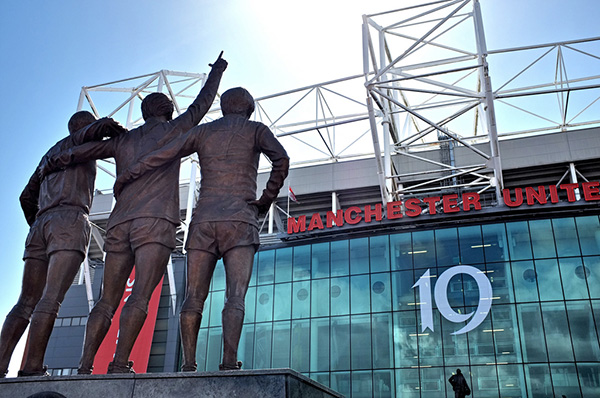
With the turning of the seasons from summer to autumn, we collectively recognize the return of another season of football. In recent years, however, it’s not just the kind of football played on the gridiron with touchdowns and field goals that American sports fans are growing excited for. Increasingly, it’s the football, or fútbol, played on the wide pitch with two goals and 45-minute halves.
Yes, the unthinkable — for some — has happened. Soccer, the otherwise global phenomenon that seemed to never catch on in the United States, has finally begun making inroads into the American sports scene.
Thanks to a brand new, multimillion-dollar deal between NBC Sports and the Barclays English Premier League to televise the soccer league in the United States, football hooligans are cropping up across the 50 states to catch glimpses of English giants Manchester United, Chelsea, Arsenal and Liverpool, among other European greats like Real Madrid, FC Barcelona and Bayern Munich.
Particularly popular among young people looking for more variety of sporting entertainment alongside the established powers of the NFL, the NBA, MLB and the NHL, soccer in the United States has soared to unprecedented heights of popularity. Thanks in no small part to the increasing prominence of the U.S. Men’s and Women’s National Teams on the global stage and the wider availability of coverage on the Internet.
Soccer’s impact on America’s youth in particular is increasingly evident — walking through the neighborhood park or playground reveals not only jerseys emblazoned with American sports royalty like Brady, Manning, James and Bryant, but also a new set of jerseys proudly displaying the titans of the “beautiful game”— Ronaldo, Messi, van Persie, Suárez and a whole cohort of others.
For so many years derided as the black sheep of American sports, unfairly dismissed as a game with not enough scoring but more than enough injury faking, soccer is finally being recognized for its tough competition, fierce rivalries, thrilling finishes and abundance of skill and talent.
The rise of soccer in the United States offers a win-win for consumers and producers alike — for rabid sports fans, it’s another product to feed their insatiable hunger. For leagues, advertisers and broadcasters, it’s a new source of income in the form of advertising revenue, souvenir and apparel sales, and massive broadcasting money.
So whether it’s “Glory, Glory Man United” or “Hala Madrid,” soccer is well on its way to entrenching itself in the collective psyche of American sports fans.
Securing a deal to broadcast another major sports league is a huge step forward for the soccer industry. As this generation grows up and has children, many feel that they will give rise to a whole new generation of soccer fans, meaning that American soccer fandom will be here to stay for the foreseeable future.
A version of this article appeared in the Tuesday, Sept. 17 print edition. Charles Surette is a contributing writer. Email him at [email protected].

























































































































































